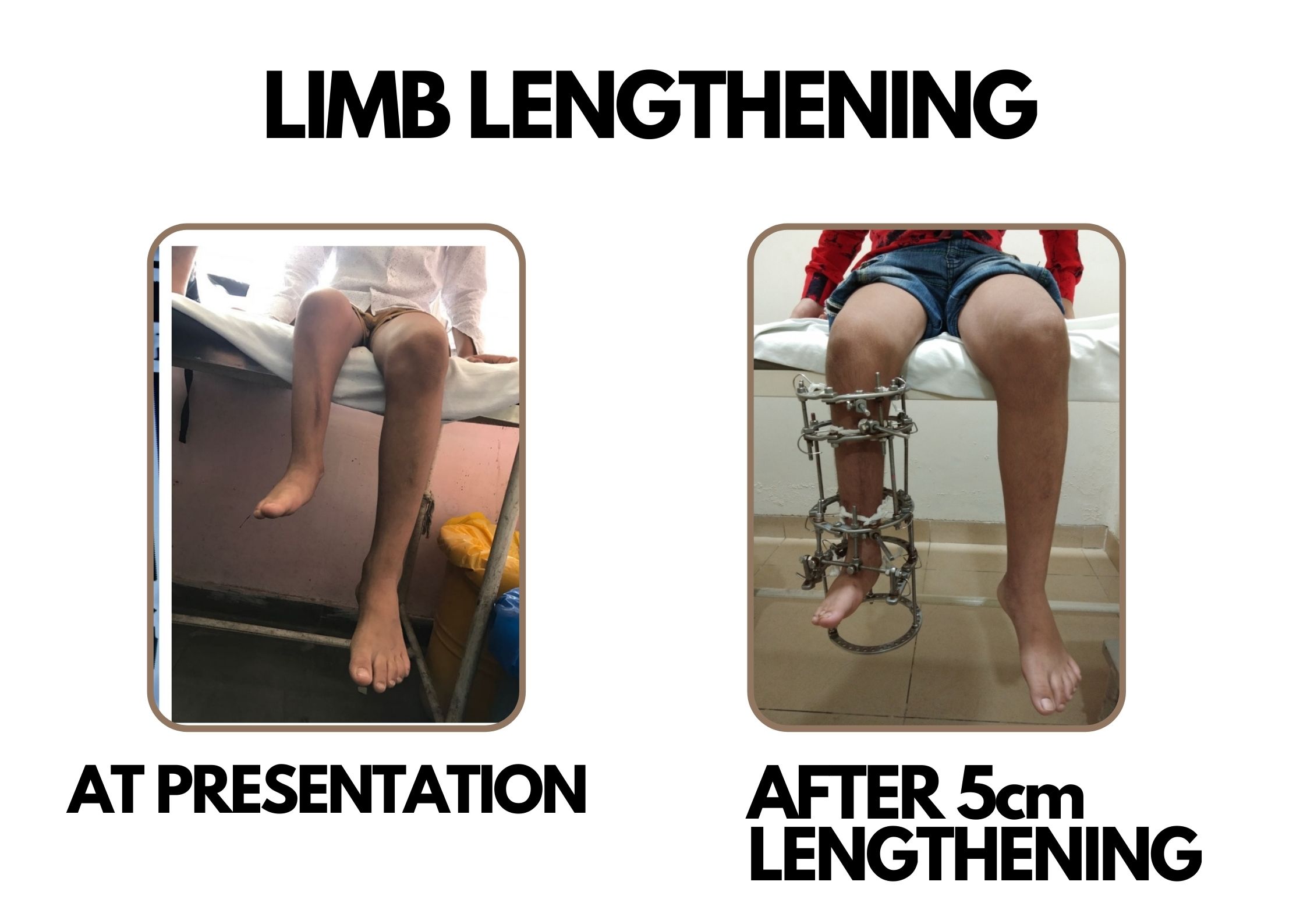8 Years Experience
MBBS, MS (Orthopaedics) FIPO (Mumbai)Consultant Paediatric Orthopaedic & Limb reconstruction surgeon.

Leg lengthening and shortening are types of surgery to treat some people who have legs of unequal lengths.
These procedures may:
BONE LENGTHENING
Traditionally, this series of treatments involves several surgeries, a long recovery period, and a number of risks. However, it can add up to 6 inches (15 centimeters) of length to a leg.
When the leg has reached the desired length and has healed, another surgery is done to remove the pins.
In recent years, several newer techniques have been developed for this procedure. These are based on the traditional leg lengthening surgery, but may be more comfortable or convenient for some people. Ask your surgeon about the different techniques that may be appropriate for you.
BONE RESECTION OR REMOVAL
This is a complex surgery that can produce a very accurate degree of change.
BONE GROWTH RESTRICTION
Bone growth takes place at the growth plates (physes) at each end of long bones.
The surgeon makes a cut over the growth plate at the end of the bone in the longer leg.
REMOVAL OF IMPLANTED METAL DEVICES
Metal pins, screws, staples, or plates may be used to hold the bone in place during healing. Most orthopedic surgeons will wait several months to a year before removing any large metal implants. Another surgery is needed to remove the implanted devices.
Why the Procedure Is Performed
Leg lengthening is considered if a person has a large difference in leg length (more than 5 cm or 2 inches).
The procedure is more likely to be recommended:
Leg shortening or restricting is considered for smaller differences in leg length (usually less than 5 cm or 2 inches). Shortening a longer leg may be recommended for children whose bones are no longer growing.
Bone growth restriction is recommended for children whose bones are still growing. It is used to restrict the growth of a longer bone, while the shorter bone continues to grow to match its length. Proper timing of this treatment is important for best results.
Certain health conditions can lead to very unequal leg lengths. They include:
After bone growth restriction:
After bone shortening:
After bone lengthening:
Because the blood vessels, muscles, and skin are involved, it is important to check the skin color, temperature, and sensation of the foot and toes frequently. This will help find any damage to blood vessels, muscles, or nerves as early as possible.
Outlook (Prognosis)
Bone growth restriction (epiphysiodesis) is most often successful when it is done at the correct time in the growth period. However, it may cause short stature.
Bone shortening may be more exact than bone restriction, but it requires a much longer recovery period.
Bone lengthening is completely successful about 4 out of 10 times. It has a much higher rate of complications and need for further surgeries. Joint contractures may occurs.

Consultant Paediatric Orthopaedic & Limb reconstruction surgeon.
© Copyright 2020. All Rights Reserved | Powered by Dr Deepak khurana- Paediatric Orthopaedic Surgeon Crafted by CWM Technologies